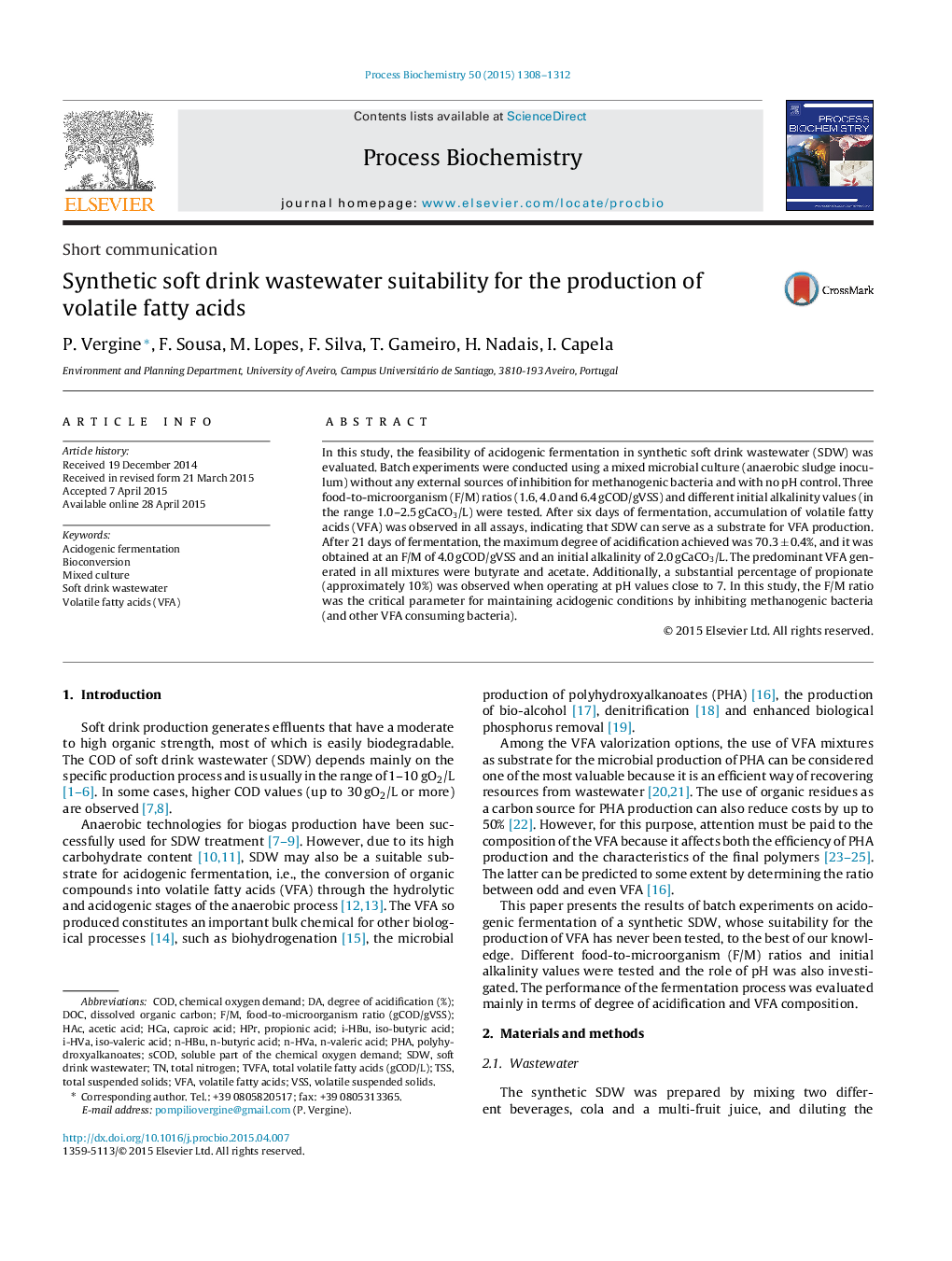| Article ID | Journal | Published Year | Pages | File Type |
|---|---|---|---|---|
| 34320 | Process Biochemistry | 2015 | 5 Pages |
•The suitability of soft drink wastewater for acidogenic fermentation was evaluated.•After 21 days of batch fermentation, a maximum degree of acidification of 70.3 ± 0.4% was achieved.•The predominant VFA generated in all mixtures were butyrate and acetate.•Low alkaline pH values favored the generation of VFA mixtures suitable for PHA production.
In this study, the feasibility of acidogenic fermentation in synthetic soft drink wastewater (SDW) was evaluated. Batch experiments were conducted using a mixed microbial culture (anaerobic sludge inoculum) without any external sources of inhibition for methanogenic bacteria and with no pH control. Three food-to-microorganism (F/M) ratios (1.6, 4.0 and 6.4 gCOD/gVSS) and different initial alkalinity values (in the range 1.0–2.5 gCaCO3/L) were tested. After six days of fermentation, accumulation of volatile fatty acids (VFA) was observed in all assays, indicating that SDW can serve as a substrate for VFA production. After 21 days of fermentation, the maximum degree of acidification achieved was 70.3 ± 0.4%, and it was obtained at an F/M of 4.0 gCOD/gVSS and an initial alkalinity of 2.0 gCaCO3/L. The predominant VFA generated in all mixtures were butyrate and acetate. Additionally, a substantial percentage of propionate (approximately 10%) was observed when operating at pH values close to 7. In this study, the F/M ratio was the critical parameter for maintaining acidogenic conditions by inhibiting methanogenic bacteria (and other VFA consuming bacteria).
Graphical abstractFigure optionsDownload full-size imageDownload as PowerPoint slide
